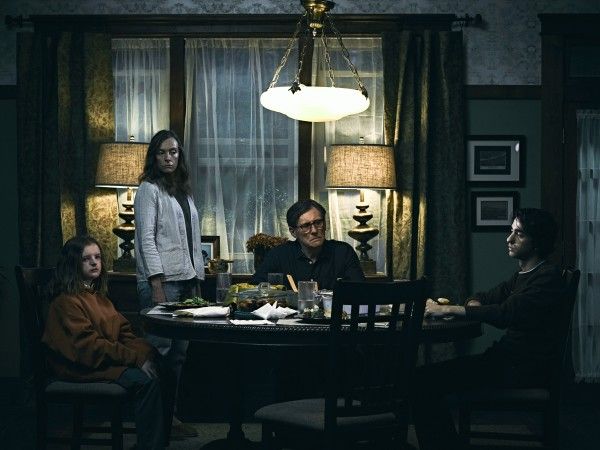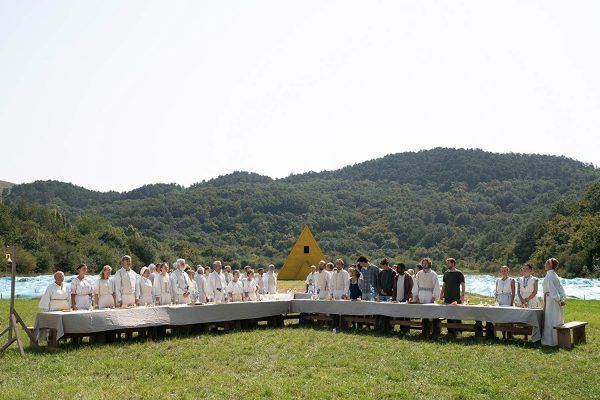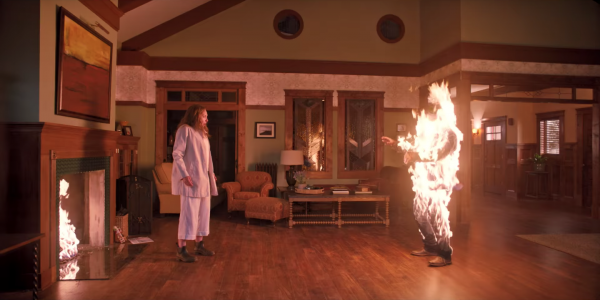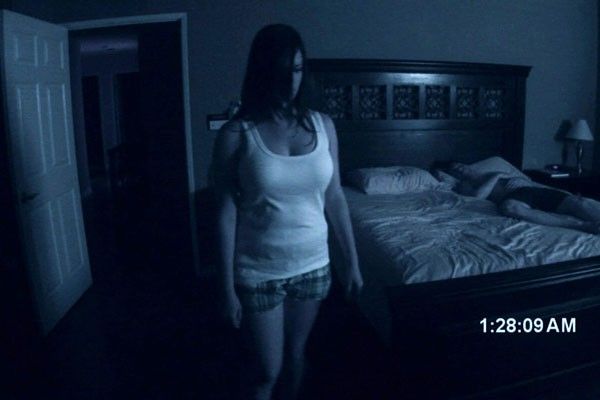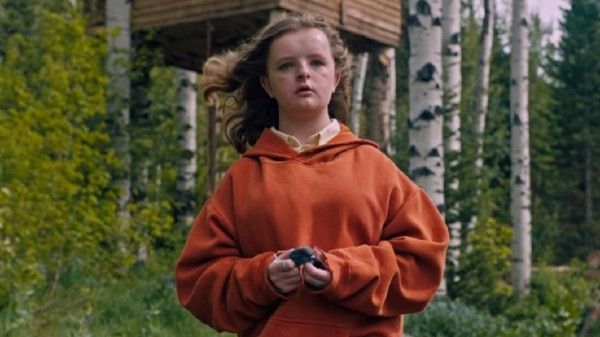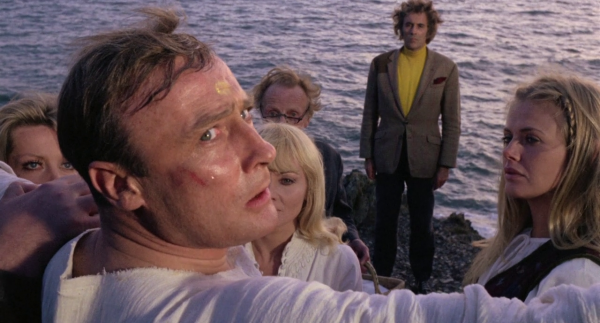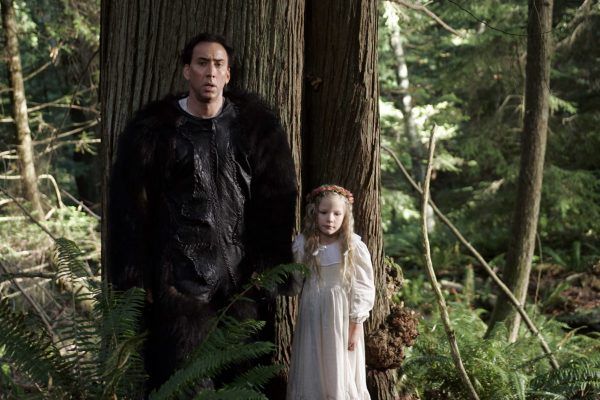Ari Aster has been praised for his brand of “arthouse horror,” delivering thoroughly unsettling films while simultaneously exploring mature emotional themes. His films are visually arresting, to be sure, and the standout shocks of his breakout hit Hereditary are the kind that stick with you for years, waiting to pop back up in your mind’s eye every time you turn out the lights. But while Aster is unquestionably a skilled director, his stories are extremely basic plots that rely on tried-and-true scary movie tropes. In fact, both Hereditary and his follow-up Midsommar are essentially remakes of bad horror movies. Two very specific ones, in fact.
But first, let me speak on this “arthouse horror” nonsense, because I very much object to it. It has stuck in my craw like a telephone pole traveling at 40 mph.
Aster has repeatedly referred to his breakout hit Hereditary as “a family tragedy,” acknowledging the horror elements while minimizing their importance to the story. Hereditary, if you’ll recall, is the movie that features a young girl’s severed head getting devoured by ants on a rural highway, several naked men leering at a teenage boy in the shadows of a creepy house, a grief-stricken mother feverishly decapitating herself with piano wire, and a headless body levitating into a treehouse to complete a demonic ritual. We get glimpses of an estranged family collapsing in the wake of a tragedy, sure, but when the plot summary of your movie is “a demon murders three people so that a cult of his followers can deposit his spirit into a teenage boy,” you’ve made a horror movie. The tragedy is incidental. That’s like Richard Donner calling The Omen “a political thriller.”
Hereditary is about a grief-stricken family falling prey to evil forces, but it is not a film about grief. It doesn’t explore the emotion or its consequences in a realistic manner. Aster insists horror was the tool he used to tell his tragedy, when in actuality the opposite is true. The tragedy is in service to the horror, not vice versa. In contrast, The Babadook and Lake Mungo are examples of horror being used as a lens through which to tell a story about the effect grief and loss actually has on a family.
With his follow-up Midsommar, Aster has said his intent was to make a breakup film couched in folk horror. But Midsommar is mostly a failure as a horror movie. It’s two-and-a-half hours of bizarre comedy lumbering towards a conclusion so obvious Aster literally shows it to the audience in the very first frame as if to say “fuck it, you all know where this is going.” To his credit, Aster has acknowledged that Midsommar’s finale is predictable, and that his goal was to surprise the audience with the journey of his main character Dani (Florence Pugh) and the ultimate choice she makes. (Although, I would argue that Dani’s fate is also pretty telegraphed, considering I was expecting an additional reveal that kindly cult thirst trap Pelle had somehow murdered her parents and sister to push her into the arms of the Hårga.)
Interestingly, Aster wrote Midsommar for-hire, after a studio pitched him their idea for a folk horror film in the style of Eli Roth’s Hostel. Roth and Aster couldn’t be further apart in terms of critical praise. But Aster’s lofty self-evaluation of Midsommar as a breakup film told against a backdrop of otherist horror could also be applied to Roth’s thunderous flop The Green Inferno, which is similarly about a college student trying to gain the attention of an emotionally distant, manipulative asshole before ultimately finding salvation thanks to a group of supposed savages.
Virtually every classic horror movie begins from a place of recognizable characters experiencing relatable emotions, and then plays off of the fears associated with that emotion as things spiral out of control. For instance, The Exorcist is about a struggling single mother. Rosemary’s Baby is about an abusive marriage. Candyman is about racism and poverty. Wes Craven’s Shocker is about the dangers of the death penalty giving dangerous felons electricity powers. I appreciate that Aster understands that movies need to be about something relatable to truly resonate with an audience, but he’s not reinventing the wheel here. It’s like when Ryan Murphy thought he’d created the first horror comedy when he unveiled Scream Queens.
But I digress. The most damning piece of “Ari Aster’s films are actually super basic” evidence is that they’re both thinly-veiled remakes of older, worse horror movies. Hereditary is like a blown-out arthouse version of Paranormal Activity, and Midsommar is so close to The Wicker Man that I thought I’d missed “based on The Wicker Man” in the opening credits. Hear me out.
Hereditary is essentially the story of the first four Paranormal Activity films condensed into a single two-hour film. (Which is what you would get if you cut out all the time those movies devote to watching characters sleep while absolutely nothing happens.) If you haven’t seen any of the Paranormal flicks, here’s a quick rundown: A coven of witches commune with a demon named “Toby” and try to find him a human vessel. Toby works his way through several female hosts before getting to the male child he actually wants. Kind of sounds exactly like the demon in Hereditary, right?
Sisters Katie and Kristi first get exposed to Toby when they are little girls. Their grandmother Lois is the leader of the coven, and she uses Toby to kill the girls’ mother and gain custody of the girls. Later, as adults, Kristi and Katie both become possessed by Toby, with Katie ultimately killing her boyfriend Micah, Kristi, and Kristi’s husband Daniel, and kidnapping Kristi’s infant son Hunter. It’s hinted that Lois made some kind of bargain with Tobi and Hunter was the price of the bargain, so Hunter is the vessel Tobi has wanted all along. Toby’s single-minded pursuit to possess Hunter is the focus of the fourth film as well, although by that point things get pretty confusing (Hunter somehow gets adopted by another family and is living under a different name, despite getting thoroughly abducted by his demon-infested aunt the last time we saw him).
The plot of Hereditary is almost identical, albeit with a few less characters involved. Annie’s mother Ellen is involved in a coven dedicated to resurrecting a demon, exactly like Kristi and Katie’s grandmother Lois in the Paranormal movies. Ellen puts the Hell King Paimon’s spirit into Annie’s daughter Charlie, because she wasn’t allowed anywhere near Annie’s son Peter when he was little thanks to their strained relationship. Charlie is merely a placeholder - Paimon needs to inhabit a male body, and Peter was always the intended vessel. Paimon causes Charlie’s death, then possesses Annie, who burns her husband Steve alive somehow in a scene that still doesn’t make any damn sense before sawing her own head off with a wire. With the family out of the way, the coven is finally able to complete the ritual of injecting Peter with that sweet sweet demon, and all hail King Paimon.
So, both Hereditary and Paranormal Activity begin with a demon-worshipping matriarch who summons a Lord of Hell to infest her grandchildren. And in both movies, the demon gets put into the wrong female host, and then kills his way through the entire family to get to the magic special boy he always wanted.
Midsommar is straight-up The Wicker Man. It's not even subtle. In Midsommar, college student Dani has an emotional breakdown after her sister kills herself and both of their parents in a murder-suicide. Several months later, Dani goes to Sweden with her boyfriend, his idiot pals, and an exchange student named Pelle, who has invited them to the peculiar secluded village where he grew up to celebrate Midsommar. It’s a pretty typical harvest celebration, with a maypole and a May Queen and all that, except for the fact that the celebration only occurs once every 90 years. Also, it takes place during the time of year in which the sun never fully sets, casting everything in permanent daylight. One by one, Dani’s friends are killed by the cult, until we ultimately learn that they were all intended to be harvest sacrifices. Dani escapes this fate because she’s been chosen as the May Queen, and as such she gets to decide the final sacrifice. So she picks her lame boyfriend Christian, who is stuffed into a bear suit and burned alive inside a giant barn, alongside several corpses and a few other volunteers from the community.
In The Wicker Man, police detective Neil Howie travels to a pagan community on the island of Summerisle to search for a missing girl named Rowan. The cultists are in the middle of celebrating May Day, and they’ve elected a young girl as May Queen each year to lead the festivities. The cultists all tell Howie that they’ve never heard of Rowan, but he finds her name in a school registry and begins to suspect that she’s been elected the May Queen, and will subsequently be sacrificed in some kind of ritual. He steals a costume to infiltrate the May Day parade and rescue Rowan, only to discover that she was merely bait and that he was always meant to be the sacrifice. They toss him into a giant Wicker Man and burn him alive to appease their gods and ensure a good harvest in the following year. In the infamous Nicolas Cage version, Cage infiltrates the May Day parade while dressed in a bear costume.
Midsommar/Summerisle, the May Day harvest celebration, maypole dancing, the pivotal election of a May Queen, and the notion of tricking outsiders to come to the village of their own free will to then be burned as sacrifices are all obvious connections, as well as the final sacrifice being a dude hilariously stuffed inside a bear suit. In both Midsommar and The Wicker Man, the cultists surround the final burning effigy to sing / mimic the agonized wails of the dying. Both movies also take place almost exclusively during the day, which is rare for horror films.
The Wicker Man is based on a book called Ritual by David Pinner, and Midsommar is close enough to both that Pinner could probably sue. At the very least, it’s Wicker Man fanfiction. Interestingly, Pinner has stated that he’d sold the rights to his novel to Christopher Lee in 1971, two years before The Wicker Man came out. (Lee appears in the film as Lord Summerisle, the leader of the community.) Even though that film heavily borrows from his novel, Pinner didn’t receive a credit until the 2006 Wicker Man remake. He must be used to his story getting ripped off by now.
Anyway, I don’t hate Ari Aster’s films. Ok, that’s not true, I hated Midsommar, kind of. I definitely can’t wait for him to make a 187 minute film about a kid befriending a doll that becomes possessed by the soul of a serial killer and murders his whole family. Aster will call it “a film about divorce spun through the spindle of horror” and nobody will question it. Hail King Paimon!


